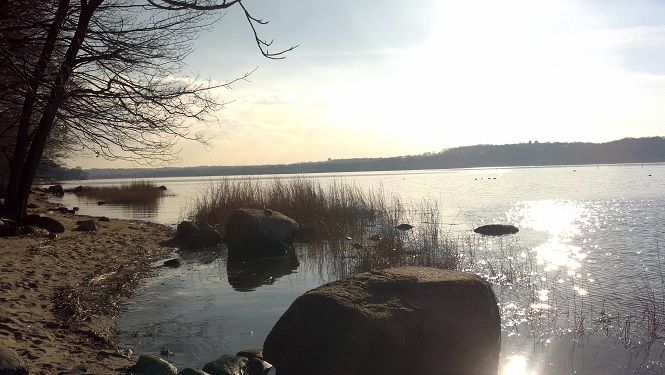Concretions of Garvies Point
The concretions found on the beach at Garvies Point Preserve are commonly referred to as "Indian Paint Pots" or "Rattle Stones". These are composed of a combination of iron oxides which include hematite, limonite and goethite. Were they made by Native Americans? No, they are formed naturally. Were they used by them? Why not. These concretions are an excellent source for coloring pigments of red and yellow ocher and there were no hardware stores or Home Depot available at this time.
 "Paint Pots" are a product of physical and chemical weathering of pyrite nodules associated with the 70 million years old Cretaceous
clay deposits exposed along the shore. Metallic crystal cubes of pyrite (iron sulfide) nodules are found on lignite, an early form of coal, formed from
carbonized Cretaceous plant debris that is imbedded in the clay. When pyrite is washed into the surf and exposed to the atmosphere, two
processes take place that transform a pyrite nodule into an "Indian Paint Pot". First, iron sulfide is changed to iron oxide chemically through oxidation.
Second, the nodule becomes smoother and rounder by abrasion. The end product is a round, reddish concretion.
"Paint Pots" are a product of physical and chemical weathering of pyrite nodules associated with the 70 million years old Cretaceous
clay deposits exposed along the shore. Metallic crystal cubes of pyrite (iron sulfide) nodules are found on lignite, an early form of coal, formed from
carbonized Cretaceous plant debris that is imbedded in the clay. When pyrite is washed into the surf and exposed to the atmosphere, two
processes take place that transform a pyrite nodule into an "Indian Paint Pot". First, iron sulfide is changed to iron oxide chemically through oxidation.
Second, the nodule becomes smoother and rounder by abrasion. The end product is a round, reddish concretion.
"Rattle Stones", on the other hand, are produced by subsurface precipitation of iron oxides around a sediment core, typically a lump of clay. When this mass dries and solidifies, the clay inside will shrink and become loose creating a "rattle" when the concretion is shaken. Both types of concretions have the ability to incorporate sediment in their outer wall during colloidal stages of oxidation and precipitation. In this way most concretions found have an "armor" containing sand, pebbles, etc.
A detailed exhibit on The Concretions of Garvies Point can be seen at Garvies Point Museum, 50 Barry Drive, Glen Cove, NY 11542. 10am to 4pm Tuesday through Saturday. Visit us... See what's here.
Written by: George Allgaier, Curator of Geology; © 2003
Garvies Point Museum & Preserve

